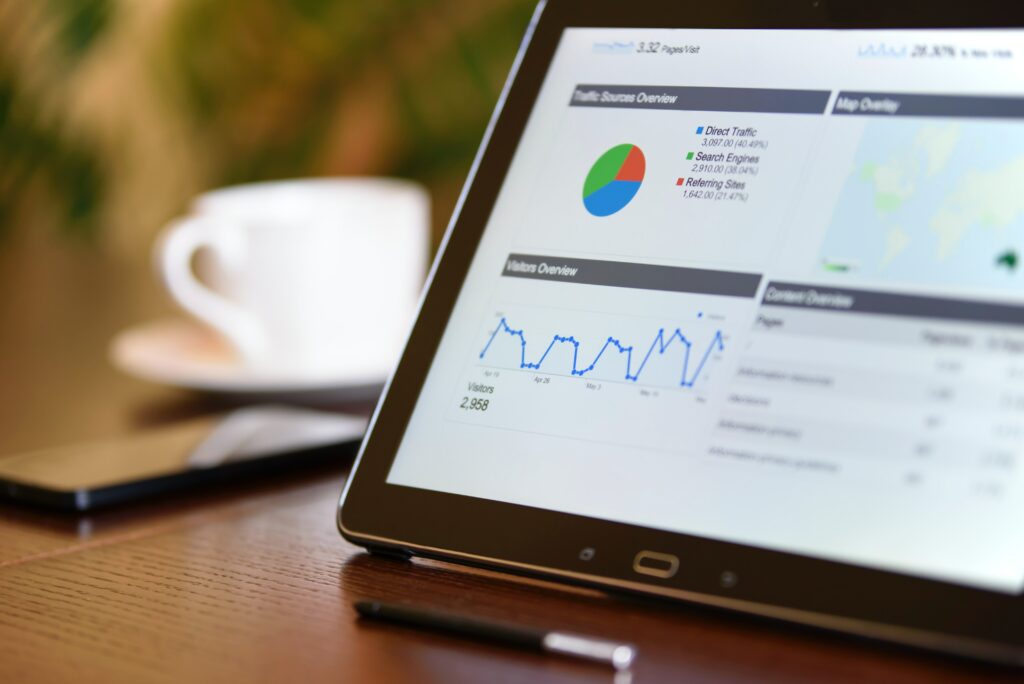Web Technology
Web Analytics vs Mobile Applications for Businesses
With massive data, companies increasingly rely more on analytics to shape their business. It is not surprising that over 65% of small businesses spend over $10,000 a year on analytics to better understand their customers and boost their performance. With the right analytics, businesses can make data-driven decisions and significantly improve their products, particularly SaaS products. This article will give you an overview of business analytics in its most used domains: Web Analytics and Mobile Analytics.
What are Business Analytics
Business analytics (BA) uses data and statistical methods to gain insight into data and provide users with actionable information. BA is increasingly being used for data-driven decision-making that leverages and explores data in a database, data warehouse, or data mart system.
Business Analytics vs Business Intelligence
Compared to business intelligence (BI), BA is more forward-looking. It tells the user what will happen in the future rather than what has happened in the past.
BI can help determine what happened, the problem, and the necessary decisions based on the available data. On the other hand, BA can help determine why this is happening, what it will mean if the trend continues, and what actions should be taken.
BI uses dashboards, scorecards, OLAP, and query reports to support decision-making activities. In contrast, BA uses statistical analysis, data-mining tools, and predictive modeling (learn more about data analysis in our guide to data engineering skills).

Business Analytics Methods
There are several types of BA methods. The most popular three are descriptive, predictive, and prescriptive analytics.
- Descriptive analytics reviews past events analyzes the data and provides a report. The report will indicate what happened in a given period and suggest how to prepare for the future. Thus, it is a reactive strategy. Descriptive analytics usually comes from data visualizations like charts or graphs. As this method uses simple techniques and the outcome is easy to understand, it is widely used in business for day-to-day reports. Google Analytics is among the most popular analytics tools that provide a snapshot of the company’s operations.
- As the name indicates, predictive analytics is a proactive strategy; it prepares a decision-maker for future events. For example, it might indicate that if a current sales trend continues, a company will need a certain number of salespeople in the coming years. To make predictions, predictive analytics uses statistical and machine learning techniques to come up with the most probable guesses. Major providers of predictive analytics software include SAS, IBM, SAP, Microsoft, and Oracle.
- Prescriptive analytics goes beyond descriptive and predictive analytics by recommending a course of action that a decision maker should follow to get the best outcome. Businesses can benefit from prescriptive analytics in a variety of ways. For example, companies can know which product features to add to attract new customers with minimum costs.
Business analytics in Web and Mobile Applications
Within the general domain of business analytics, two terms are commonly used: web analytics and mobile analytics. Web analytics collects and analyzes Web data to determine a website’s efficiency and effectiveness.
On the other hand, mobile analytics concerns mobile Web (like PWAs) and mobile apps. It assesses and measures traffic and app usage on mobile devices.
With web and mobile analytics, businesses can measure performance and gain insights into user behaviors.
This will help companies stay competitive by providing their customers with what they truly need.
How Businesses Can Benefit from Web and Mobile Analytics
The Web Analytics Process
The web analytics process begins with setting goals to determine what the business is trying to achieve. Keep in mind that these goals should align with the overall goals of the organisation. Then, all the data of the website such as the number of visitors, time spent on each page, etc. is collected. Based on the business goals, the data collected will be processed into actionable information. Next, key performance indicators (KPI) are set to measure the success of the web pages. In the following step, companies will develop a strategy to achieve their goals in the first place. Finally, businesses need to test out different variants of the strategy to see which one generates the best results.
The two main categories of web analytics
On-site web analytics track all activities of web visitors to assess the site’s performance. The on-site metrics include page view, visitors, unique visitors, bounce rate, click, etc. These data can point out their behaviours such as where they usually go to after landing on a specific page; or which content is relevant to them. From these analytics, businesses make changes to their websites that correspond with their customer behaviours. For example, if you find that most of the visitors view the website from tablets, you can build a tablet-specific website to optimise their experience.

Off-site web analytics, on the other hand, can track visitors’ activities outside of the website. Data is collected across the Internet from social media, other websites, search engines, etc. to measure potential audience. Altogether, off-site analytics give you an overview of how your business is performing within the industry. (Learn more about how core app dashboards can help monitor performance, manage resources, and make data-driven decisions efficiently)
Web Analytics Tools
Some common web analytics tools include:
- Google Analytics: one of the most used tools for web analytics. A survey found that over 80% of respondents set up Google Analytics for their website.
- Google Optimize: an tool that allows you to run A/B tests and decide which components drive the best results.
- Monster Insights
- Hubspot
- Social media analytics tools such as Facebook Pixels or Twitter Analytics
Mobile App Analytics in Business
As the number of mobile users is increasing daily, mobile analytics is gaining in popularity. In fact, businesses can hardly design an application that meets their users’ demands without mobile analytics. Like web analytics, mobile analytics will give you insights into app users and help you build what works best for your customers.
Types of Mobile Analytics
There are three popular types of mobile analytics:
- Advertising and marketing analytics: Determines which ad a user clicked that led the user to install the app on his or her device
- In-app analytics: Determines who your users are and how they interact with the app
- Performance analytics: Ensures the app’s functional and operational success by measuring the app uptime and app responsiveness
Metrics You Should Track in Mobile App Analytics
Depending on your goals, e.g. get more downloads or retain users, you would need to track various data. Some of the important metrics are:
- Number of downloads
- Number of uninstalls
- Number of sessions
- Session length
- Sessions Intervals
- Retention rate
- Churn rate
- Heatmaps
This data helps you understand customers’ retention rates, lifetime value, and what leads them to uninstall your app. Then, you can turn these insights into actionable plans to enhance your product.
Mobile Analytics in Action: Airbnb
Airbnb is a community marketplace for listing, discovering, and booking accommodations worldwide—online or from a mobile phone. It is active in more than 65,000 cities and 191 countries.

Airbnb needed an analytics tool to help the company optimize its mobile app so that potential first-time hosts could list rental properties.
The company used Mixpanel for this implementation.
Mixpanel is an analytics platform for mobile and Web applications. It helps a Web site or a mobile app analyse the actions and activities the visitors take or perform in an application. This is significantly different from measuring page views. Actions might include loading a photo, opening an application, adding comments, or reviewing a listing on a Web site.
Airbnb used the Mixpanel platform to do the following on their mobile app:
- Optimise their first-time listing and booking flows
- Measure the amount of time customers spent within the app
- Measure most frequent actions
- Measure percentage of visitors who passively browsed versus actively managed a booking
According to Airbnb, Mixpanel’s event-tracking and funnel analysis (using a series of events that lead to a defined goal) assisted the company to revamp the host listing process on their app, resulting in a 400 percent increase in conversion rate.
Airbnb also uses another analytics tool called Spark, which assists hosts who list their rental properties in establishing a competitive price. Obviously, over- or underpricing is not desirable. The system uses 5 billion data points a day to come up with a competitive price. This should bring more listings to the site and also generate more revenue for Airbnb, which collects 3 percent from each deal.
Web and Mobile Analytics in Closing
The value that analytics offers organizations is huge.
Businesses that want to create the best user experience will definitely need BA to shape their products. For businesses focusing on SaaS products in particular, web and mobile analytics are indispensable as they will ensure customer satisfaction across all platforms.
If you have any questions or need help with your SaaS product, fram^ is a top software development company you can rely on. Contact us via the form below and get advice from our experts in the industry.


